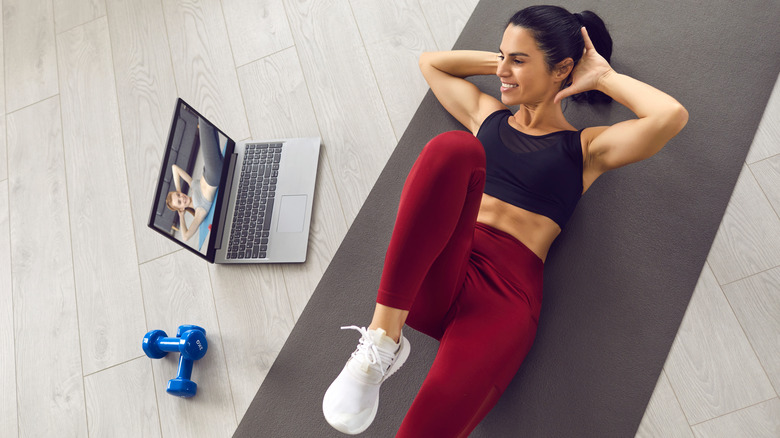What You Should Know About Stabilization Muscles
If you've ever wondered what stabilizer or stabilization muscles are, look no further. As it turns out, stabilizer muscles act to help stabilize the body and its extremities during movement and exercise. Unlike the muscles directly involved in any given movement, stabilizer muscles work to keep your joints balanced and steady while your primary muscles engage in movement and physical activity. According to Verywell Fit, any muscle can act as a stabilizer, and it typically depends on the exercise.
For example, bicep curls require the assistance of your shoulder and abdominal muscles to help keep you steady. Squats rely on the muscles in your core and lower body, including your hamstrings and calves, to help keep you balanced and upright. That's why it is important to strengthen these muscles by engaging in exercises that can help improve your overall balance and coordination, especially if you are just beginning your fitness journey.
Adopting balance and stability exercises
Fortunately, you can enhance your stabilization muscles through any number of exercises and workout programs. According to Health, balance and stability exercises can help steady and strengthen various parts of your body, depending on the exercise. That being said, they all tend to primarily focus on your lower body and abdominal muscles. "Your core is the foundation of all movements, especially in stabilization work," Duana Soeda Stinson, a Pilates instructor in New York City, told Health.
One important stability exercise is known as a leg lower, according to Self. This involves lying flat on your back with your arms at your sides and your legs raised. Lower one leg to the ground at a time and raise it back into the air. To engage your core, keep your back pressed directly against the floor. Another important exercise is the glute bridge, which involves lying face-up with your hands out at your sides and your knees bent. While only placing your heels on the ground, lift your butt off the floor and into the air, squeezing your glutes and abdominal muscles. Your body should form a straight line in the air before you return to the starting position. Other balance and stability exercises include the bear hold, bird dog, and downward dog to plank.

